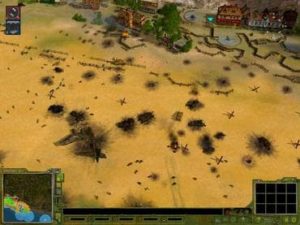

SPACE WEATHER BALLOON DATA: Almost once a week, and the students of Earth to Sky Calculus fly space weather balloons to the stratosphere over California. MAG is the visual magnitude of the asteroid on "Lunar Distance." 1 LD = 384,401 km, the distanceīetween Earth and the Moon.
#Descargar sudden strike 1 español code
Even Amazon doesn't carry items this far out.ĭon't forget to enter coupon code "SPACESANTA" at checkout for a 10% holiday discount.Īll sales support hands-on STEM education It's filled with unique items that have flown to the edge of space onboard cosmic ray research balloons.Ĭarried aloft by giant helium balloons, these unique gifts have flown above 99.7% of Earth's atmosphere, experiencing space-like blasts of cosmic rays, extreme cold, and a wild ride parachuting back to Earth after the balloon explodes. Are you looking for a far-out gift? Check out the Earth to Sky Store. GIFTS FROM THE EDGE OF SPACE: Christmas is coming. Photographs taken at that moment may have a "diamond ring" quality, with a sliver of full-Moon brightness shining from only one side of the shadowed disk.

8, 2669.Īt the moment of maximum coverage, a whisper-thin 0.8 arcminute slice of the Moon will extend beyond the edge of Earth's umbral shadow. 18, 1440 - and we won't get a longer one until Feb. According to Sky & Telescope, this will be the longest partial lunar eclipse since Feb. Because the Moon moves slowly at apogee, it takes longer to cross Earth's shadow. What makes this eclipse so long? The Moon is near apogee, the farthest point in its orbit around Earth. Observers in North America and Pacific islands will have the best view. More time zones: EST, CST, MST, PST, HST.
#Descargar sudden strike 1 español full
For the next 3 1/2 hours, the full Moon be eclipsed with a peak coverage of 97%: 18th at 11:19 pm Pacific Time when the Moon touches Earth's deep-red umbral shadow. LUNAR ECLIPSE-TONIGHT! It's happening tonight-the longest partial lunar eclipse in more than 600 years.

NOAA forecasters say that a corotating interaction region (CIR) traveling just ahead of the stream could spark geomagnetic activity and Arctic auroras on Nov. Flowing from a southern hole in the sun's atmosphere, the gaseous material is due to arrive on Nov 21-22. THE NEXT SOLAR WIND STREAM: Earth is exiting one solar wind stream. Neutron counts from the University of Oulu's Sodankyla Geophysical Observatory show that cosmic rays reaching Earth are slowly declining-a result of the yin-yang relationship between the solar cycle and cosmic rays. Credit: SDO/HMIĬosmic Rays Solar Cycle 25 is beginning, and this is reflected in the number of cosmic rays entering Earth's atmosphere. All of these sunspots have simple 'alpha-class' magnetic fields that pose no threat for strong solar flares.


 0 kommentar(er)
0 kommentar(er)
